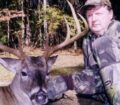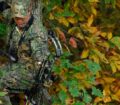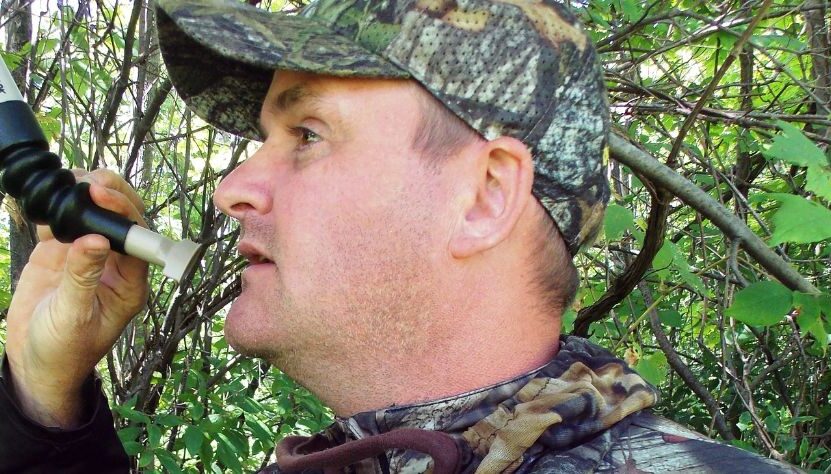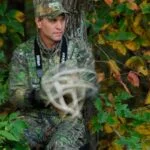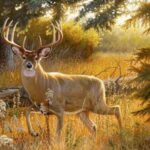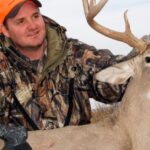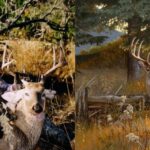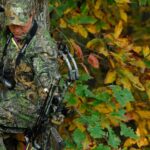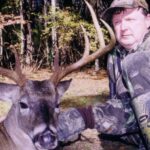Editor’s Note: Eddie Salter of Brewton, Alabama, began hunting at a very young age. Salter started calling turkeys competitively in 1981 and has amassed an impressive list of titles, including two World Open Turkey Calling Championships. He’s known nationally for his deer-hunting prowess and has starred on many outdoor TV shows and in numerous videos. This week Salter discusses tactics for taking deer.
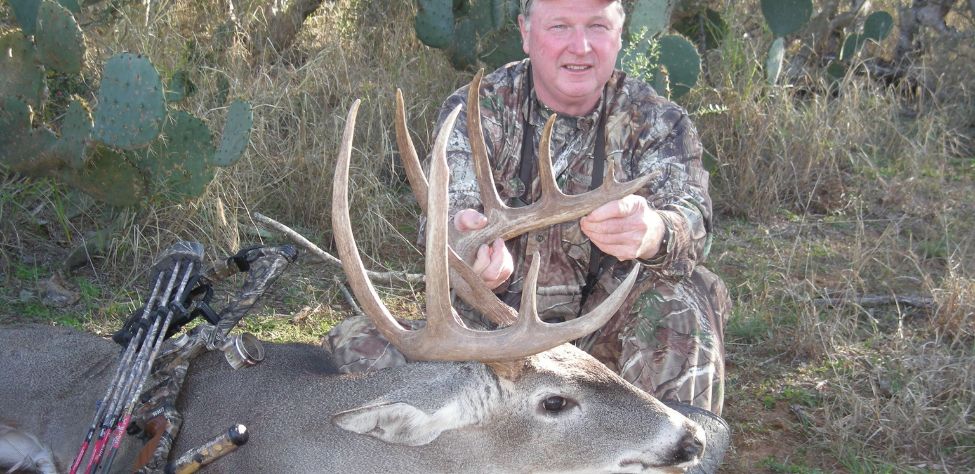
Remember That Rattling and Grunting Have Different Ranges
A buck can’t come to you if he doesn’t hear you call. For long-range calling, I use the rattling bag. For close-range calling, I use a grunt call. The grunt call can be used most effectively at 100 yards or less and possibly up to 150 yards away on a calm day. With a rattling bag, you can often get a buck’s attention at 300 yards or more. Remember, when using the rattling bag, that each time you use a call to lure any game, especially a game you can’t see, you want to start calling softly to attract the animals first that may be close by. If you rub the rattling bag lightly, and a deer doesn’t come to your tree stand after 5 or 10 minutes, try rubbing the rattling bag louder and harder. If after 5 or 10 minutes you still don’t see a buck, work that rattling bag hard to send your call out further. Between the times I rattled, I grunted some to paint a more realistic picture of bucks sparring. Notice that when bucks fight or spar, they grunt before, during, and after antler contact.
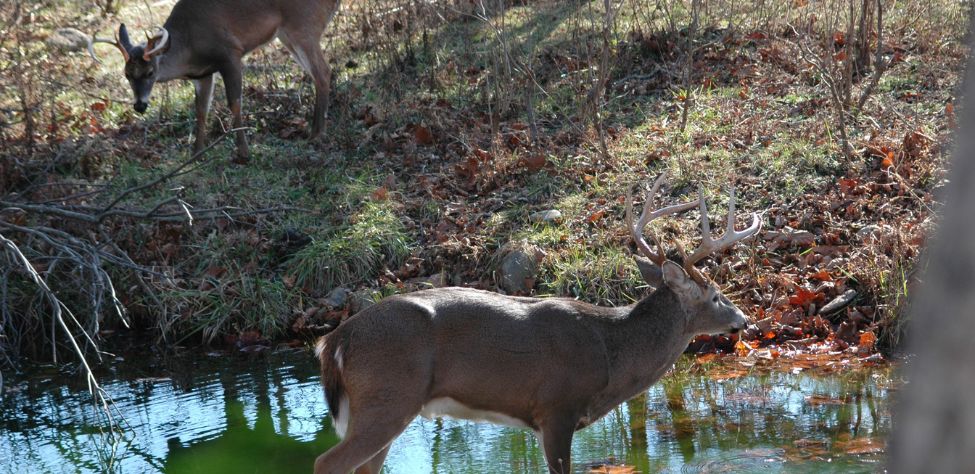
Don’t Be Afraid to Use Your Grunt Call
If you’ve ever watched boys fight in the schoolyard, remember that no two fights are the same. Often, you’ll have a small buck fighting with a large buck, two young bucks sparring, two medium-sized bucks pushing and shoving, or two large bucks pushing each other.

Vary your rattling sequences by never rattling the same way
There are small rattling bags and larger ones. Both sizes are effective. However, I prefer a small rattling bag mainly because it takes up less room in my hunting vest or fanny pack. Remember that rattling bags and antlers can’t call deer if you leave them at home or camp. Therefore, if I keep a small rattling bag in my hunting vest or fanny pack, I can use it to call deer anytime I’m hunting.
Expert Guidebooks on BowHunting Deer: Best Sellers

How to Hunt Deer Up Close with Bows, Rifles, Muzzleloaders and Crossbows
To be more successful as a deer hunter, learn all you can about the animal, the wind, the temperature and the techniques required to get in close.
In this book, you’ll hear about some of the best hunters in the nation who know how to hunt deer close, including one of the greatest archers who ever lived, Howard Hill.
John E. Phillips also shares his own deer stories and hunting tips from 50 years of experience.
VERSIONS: AUDIBLE, KINDLE & PRINT
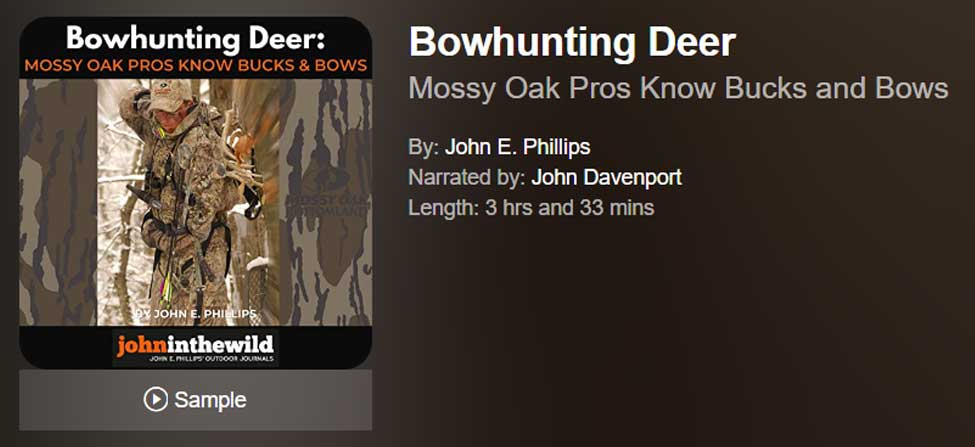
Many deer hunters have told me: “I want a deer-hunting book with regular hunters who are just like me” and “I want a deer-hunting book with the best advice from the best professional deer hunters in the nation”.
Mossy Oak’s Pro Staff is made up of some of the nation’s best deer hunters, professional deer hunters, and TV hosts whose names and advice often are heard in deer camps all over the nation. But many of the more than 1,000 Mossy Oak Pro Staff hunters are everyday, weekend, and vacation deer hunters just like you.
Whether you hunt private or public lands, you’ll find tips and tactics in this book from the Mossy Oak Pro Staff that will increase your odds for locating and taking the bucks of your dreams.
If you’re serious about learning to hunt and take deer with a bow, if you’re looking for a different strategy that will help you identify and harvest big bucks, if you want to learn from your misses as well as from the shots that connect, and if you enjoy being in the great outdoors that the Good Lord has blessed us with, then this book is for you.
VERSIONS: AUDIBLE, KINDLE & PRINT

How to Hunt and Take Big Buck Deer on Small Properties
In this book, you’ll hear from 14 hunters who either have gained permission or leased properties as small as six acres to as much as 250 acres, and how they consistently take older-age-class bucks off these little lands.
VERSIONS: AUDIBLE, KINDLE & PRINT

Jim Crumley’s Secrets of Bowhunting Deer
Using a black magic marker and a gray work jumpsuit, Jim Crumley of Buchanan, Virginia, drastically changed the nature and purpose of hunting camouflage when he created the first sportsman’s camouflage – Trebark. Crumley’s love of bowhunting and his desire to be more invisible changed hunting clothing forever.
In this hunting guide, he shares the wisdom that he’s learned throughout his lifetime about how to be a hunter, how to find a deer lease, how to scout for deer, and more.
Special features include how to:
- Have a magic 60 acres to hunt
- Decide the best equipment to use
- Find deer year-round
- Locate land to hunt
- Know the best place to put your tree stand
- Get bucks within bow range
VERSIONS: AUDIBLE, KINDLE & PRINT

How to Hunt Deer Like a Pro
How do you know if the land you hunt has a trophy deer on it? Wildlife manager Bob Zaiglin, of Uvalde, Texas and Jim Crumley, the father of modern-day hunting camouflage, tells you how to find out. GPS can make finding and taking that trophy buck easier. This hunting guide will teach you how to hunt big bucks where no one else can find them, how to call deer, and how to become versatile as a deer hunter, so that if one deer tactic doesn’t work, another one will.
In the chapter, “How to find Bucks at Scrape,” Dr. Keith Causey, retired professor of Wildlife Science at Auburn University, describes the best way to hunt a scrape.
Brad Harrison of Neosho, Missouri, is a nationally-known videographer, professional deer hunter and master at calling deer. Another master is Will Primos of Primos Game Calls. These two experts will tell the best deer calls and when to use them in this book.
And for over 20 years, Bo Pitman, lodge manager of White Oak Plantation, has been studying deer movement patterns. He explains what types of conditions are best for predicting deer movement.
VERSIONS: AUDIBLE, KINDLE & PRINT

Deer hunting and deer hunters are drastically changing each year. To learn new techniques for hunting deer and have more places to hunt, I’ve interviewed some of the best deer hunters in the nation and share their tactics in How to Hunt Deer Like a Pro: Volume II.
In Chapter 10, Jacob Lamar tells you his tactics for consistently taking older-age-class bucks on public lands in several states. Chapter 11, Bob Walker explains how to find places on public lands where you can hunt that 99 percent of the other hunters never have considered hunting. The Bonus Chapter with David Ramey tells you how, where, when and with what equipment to take big Kansas bucks on public lands by hunting in 100-degree weather when others won’t hunt.
Chapter 13, Mark Drury, his family and his guests take mature bucks every season by having more small places to hunt rather than one large property. Drury explains the strategy of having satellite farms to hunt that only may be 50-150 acres each or less. Chapter 15, Pat Reeve, who hunts far-northern states and Canada, says, “I don’t like hunting for mature bucks until the weather is 20 degrees or less.” Chapter 4, Dr. Larry Marchinton says that funnels are the most-reliable stand sites to hunt for big bucks and tells why.
VERSIONS: AUDIBLE & PRINT
Tomorrow: Tree Stands and Scents for Deer Hunting

